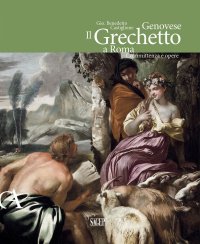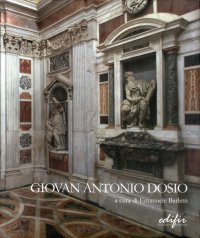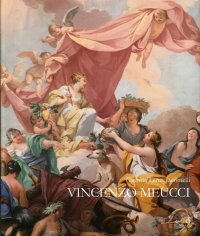Gio. Benedetto Castiglione Genovese. Il Grechetto a Roma. Committenza e opere
A cura di Orlando Anna e Francesco Rotatori.
Genova, 2023; br., pp. 304, ill. col., cm 23x29.
prezzo di copertina: € 150.00
|
Libri compresi nell'offerta:
Gio. Benedetto Castiglione Genovese. Il Grechetto a Roma. Committenza e opere
A cura di Orlando Anna e Francesco Rotatori.
Genova, 2023; br., pp. 304, ill. col., cm 23x29.
OMAGGIO (prezzo di copertina: € 150.00)
Giovan Antonio Dosio Da San Gimignano Architetto e Scultor Fiorentino tra Roma, Firenze e Napoli
A cura di Emanuele Barletti.
Fotografie di BACHerin Paolo e Saverio De Meo.
Prima edizione 2011.
Firenze, 2011; ril., pp. 844, ill. b/n e col., tavv., cm 24x28,5.
OMAGGIO (prezzo di copertina: € 98.00)
Vincenzo Meucci
Co-Editore: Cassa di Risparmio di Firenze.
Firenze, 2015; cartonato, pp. 304, ill. col., cm 25x29,5.
(Arte).
OMAGGIO (prezzo di copertina: € 50.00)
Gherardo Bosio. Opera Completa 1927-1941
Firenze, 2016; br., pp. 368, ill. b/n e col., cm 23x28.
(Architetti del Novecento. Storia e archivi).
OMAGGIO (prezzo di copertina: € 60.00)
Sublime Truth and the Senses. Titian's Poesie for King Philip II of Spain
M. Tanner
Harvey Miller Publishers
Testo Italiano, Inglese e Latino.
London, 2019; ril., pp. 232, 71 ill. b/n, 77 ill. col., cm 22,5x28,5.
(Studies in Medieval and Early Renaissance Art History).
collana: Studies in Medieval and Early Renaissance Art History
ISBN: 1-909400-27-0 - EAN13: 9781909400276
Soggetto: Pittura e Disegno - Monografie
Periodo: 1400-1800 (XV-XVIII) Rinascimento
Testo in: 


Peso: 0.55 kg
Titian's mythological paintings for Philip II, known as the Poesie, are among the most frequently discussed works of art that address a favored Renaissance theme, the influence of the pagan gods on human actions. The commission is traceable to 1549, when Emperor Charles V summoned the artist to Augsburg following Prince Philip's triumphal parade through the empire as his father's heir apparent. The cycle that took shape comprises Danae and Venus and Adonis (Madrid, Prado); Diana and Actaeon and Diana and Callisto (Edinburgh, National Gallery of Scotland); Perseus and Andromeda (London, Wallace Collection) and Europa (Boston, Isabella Stewart Gardner Museum). These masterpieces of the artist's mature period can be considered the most important Renaissance grouping of mythological paintings executed by a single artist.
The author proposes that Philip's expected elevation prompted the commission and that the subjects form a cohesive program of Hapsburg ethical views and political concerns, and that Titian created new visual idioms to represent the complex issues which the subjects address in part by engaging themes with a significant prior history in family patronage. While Titian's Poesie for Philip II are well known monuments of western culture, they have never before been investigated with this focus.
The dispersal of the pictures' in the seventeenth century resulted in a scholarly focus on the single pictures and a concentration on their sensual aspects. In Aretino, a Venetian dialogue on painting, Titian's friend and apologist Lodovico Dolce is a spokesman for art that following poetry, entices through beauty, while hiding important truths beneath the veil of allegory. This study analyzes the ways in which Titian incorporates new concepts of sensuality and spirituality in a Venetian vernacular to create masterpieces whose originality and ravishing beauty belie their didactic content.

Un Uomo un Quadro. Edoardo Pollak e la Deposizione nel Sepolcro
Incantesimi runici e sigilli magici. Un antico grimorio islandese











